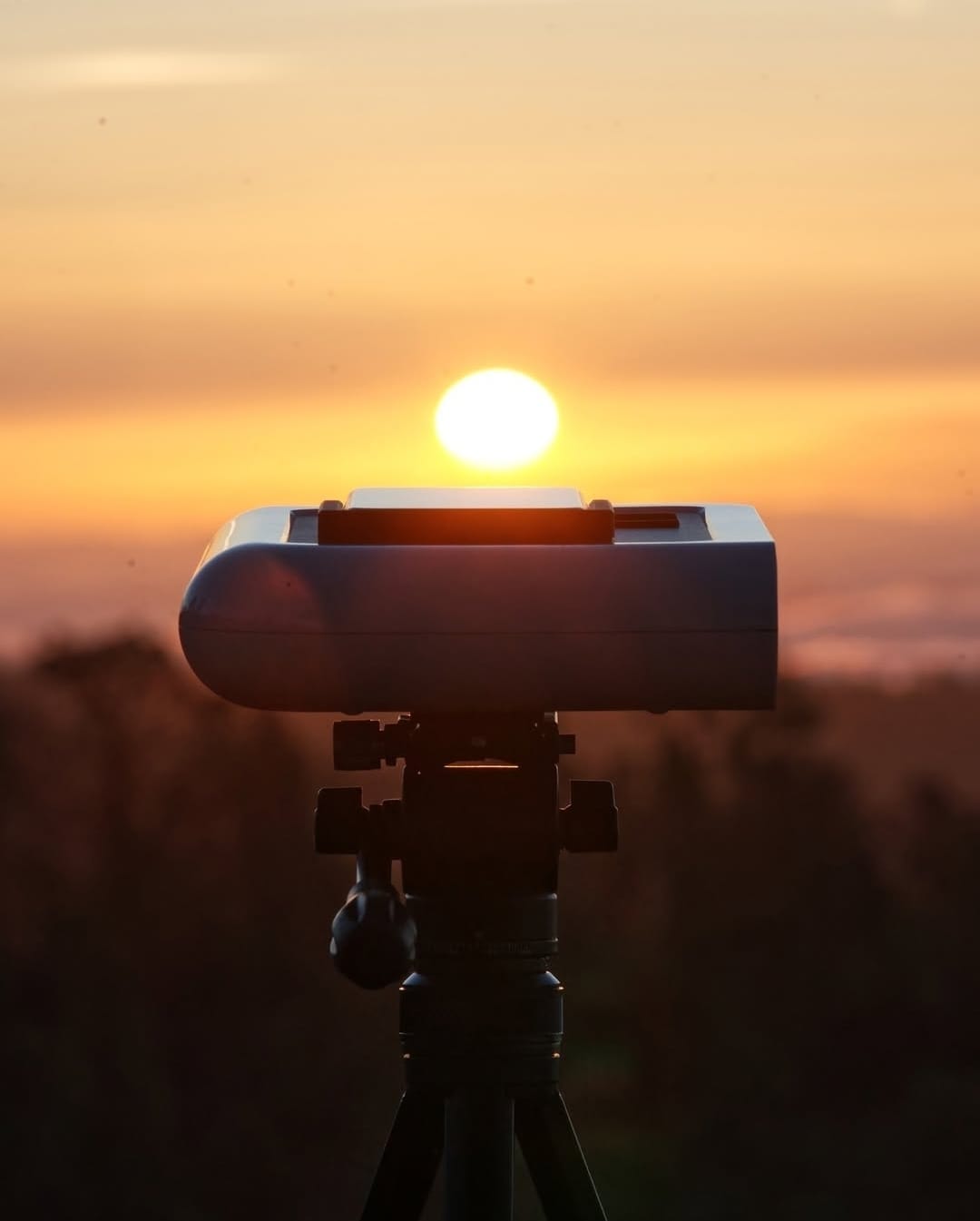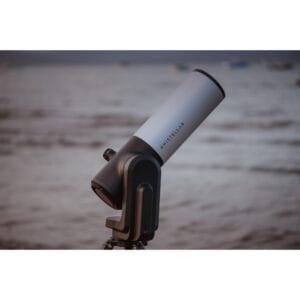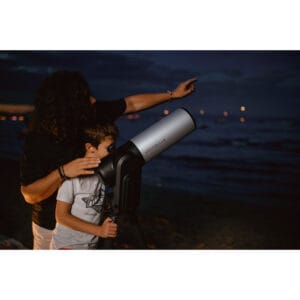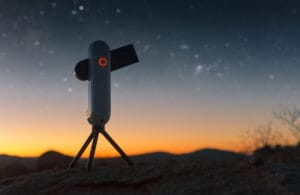The 2025 solar eclipse is a rare phenomenon you won’t want to miss—the next one won’t be visible in the Netherlands and Belgium until 2135! On March 29, 2025, the Moon will pass in front of the Sun, blocking part of the sunlight and making the Sun appear as a crescent. In some areas, up to 93% of the Sun will be obscured. Prepare well and ensure you can safely observe this unique event!
Want to not only observe but also capture this rare phenomenon? With the Hestia telescope, you can safely view and photograph the eclipse. This telescope is available for rent or purchase, specifically for astronomical events like this.
What is a Partial Solar Eclipse and how Does it Occur?
A partial solar eclipse occurs when the Moon moves between the Sun and Earth, but they’re not perfectly aligned. As a result, the Moon covers only part of the Sun, giving it a crescent appearance.
Since the Sun is never completely covered, it remains dangerous to look at the eclipse without protection. Eclipse glasses and solar filters are essential to protect your eyes.
Solar Eclipse 2025 in the Netherlands and Belgium: Time and Visibility
In the Netherlands and Belgium, the solar eclipse will be visible on March 29, 2025 between 11:17 and 13:04. This is a unique opportunity to observe an eclipse, as total solar eclipses are extremely rare in this region.
Below is an overview of the key times for the eclipse:
| Location | Eclipse starts | Maximum eclipse | Eclipse ends |
|---|---|---|---|
| Netherlands | 11:17 | 12:10 | 13:04 |
| Belgium | 11:17 | 12:10 | 13:04 |
Want to view this eclipse optimally? Make sure you have a location with a clear view of the horizon and eclipse glasses or a telescope with solar filter.
Which Telescope is Suitable for Capturing the Solar Eclipse?
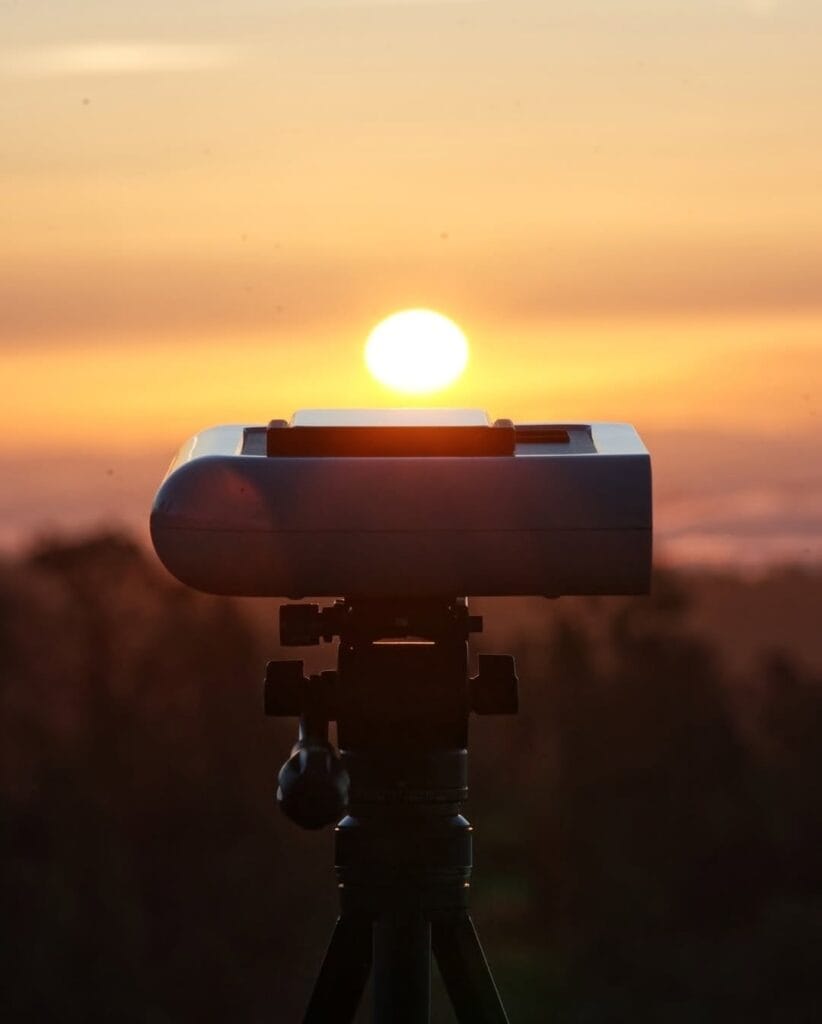
To capture a solar eclipse, you need a telescope with a solar filter. The following telescopes are ideal for observation and astrophotography:
- Hestia – This smart telescope works with your smartphone and is perfect for capturing the eclipse. Available for rent or purchase.
- Seestar S30 – Smart, small, and compact telescope. Set up in 5 minutes and ready for safe observation.
- Seestar S50 – The “big brother” of the S30. Slightly more power and a narrower field of view.
How to Safely View the Solar Eclipse?
Looking directly at the Sun without protection can cause severe eye damage. Always use:
- Eclipse glasses that meet the ISO 12312-2 standard
- Safe solar filters for telescopes, binoculars, and cameras
- Indirect viewing methods, such as a pinhole projector
What You Absolutely should NOT Do:
✘ Don’t look directly at the Sun, even with sunglasses
✘ Don’t use a telescope or binoculars without a solar filter
✘ Don’t look through a pinhole projector (only view the projection)
Future Solar Eclipses: when is the Next Total Eclipse?
A total solar eclipse won’t be visible in the Netherlands and Belgium until October 7, 2135. Want to experience a total eclipse sooner? You can travel to Spain, Greenland, or the North Atlantic Ocean on August 12, 2026.
What Determines whether a Solar Eclipse is Partial or Total?
Not every solar eclipse is the same. Sometimes we see a total eclipse, while in other places it remains a partial eclipse. This depends on:
- The Moon’s orbit: The Moon moves in a slightly inclined orbit around Earth. A total eclipse can only occur when it’s at exactly the right height.
- The shadow zones: The umbra causes a total solar eclipse, while the penumbra creates a partial eclipse. The Netherlands and Belgium will be in the penumbra in 2025.
- The distance between the Moon and Earth: Since the Moon doesn’t move in a perfect circular orbit, its distance varies. Sometimes it’s too far away to completely cover the Sun, causing an annular eclipse.
Why is a Solar Eclipse so Rare?
Although the Moon passes between the Sun and Earth every month, we don’t see a solar eclipse every month. This is because:
- The Moon’s orbit is at an angle of 5 degrees to Earth’s orbit around the Sun. This means the Moon usually passes either above or below the Sun.
- A total solar eclipse only covers a narrow strip on Earth. If you’re just outside this zone, you’ll only see a partial eclipse.
Historical Significance of Solar Eclipses
Throughout the centuries, solar eclipses have fascinated and frightened people. In ancient times, many cultures saw them as omens of disaster or divine messages. In reality, eclipses provide scientists with unique opportunities to study the Sun’s outer layer (corona), which is normally difficult to observe.
What Percentage of the Sun Will be Eclipsed in the Netherlands and Belgium?
Although the eclipse won’t be total, the Moon will cover a significant portion of the Sun. In the Netherlands and Belgium, approximately 25 to 30% of the Sun will be eclipsed, depending on your exact location. This is one of the most significant eclipses of the coming decades in this region.
Conclusion: Prepare for this Unique Phenomenon!
The partial solar eclipse of 2025 is a spectacular celestial event you won’t want to miss. Make sure you’re well prepared with the right equipment and protection.
Want to observe and capture the eclipse?

